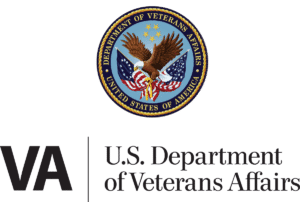For the last couple of years, it seems like the word holistic has been used to such a massive degree that it almost has lost its meaning. However, holistic means that you have to look not just at one part of the body, but multiple aspects, functions, and organs of the overall and see how the mind and body affect each other.
We are at a point in human history and medical science that we actually do understand how the mind-body connection works and we can use that for healing depression, PTSD, anxiety, and more.
Knowing how each of the components of our body and mind affects each other is crucial to help heal feelings of depression, anxiety, trauma, bipolar, and almost all other mental health issues.
Let me explain how the body and the mind affect each other via an example of the Flight or Flight system and how trauma locks us in that state, also known as Post Traumatic Stress Disorder (PTSD).
The next part explains the actual medical mechanism of PTSD for reference
Medical and Neurological Mechanism of Fight or Flight Response System
When we perceive something that is a clear danger to us, we go into a fight or flight reaction. This danger could be an accident, violence, long-term neglect or abuse, etc.
Fight or flight–So how does it all work?
The reaction begins in the amygdala, which triggers a neural response in the hypothalamus. The initial reaction is followed by activation of the pituitary gland and secretion of the hormone ACTH. The adrenal gland is activated almost simultaneously, via the sympathetic nervous system, and releases the hormone epinephrine. The release of chemical messengers results in the production of the hormone cortisol, which increases blood pressure, blood sugar, and suppresses the immune system.
The initial response and subsequent reactions are triggered in an effort to create a boost of energy. This boost of energy is activated by epinephrine binding to liver cells and the subsequent production of glucose. Additionally, the circulation of cortisol functions to turn fatty acids into available energy, which prepares muscles throughout the body for response.
More Science…
Catecholamine hormones, such as adrenaline (epinephrine) or noradrenaline (norepinephrine), facilitate immediate physical reactions associated with a preparation for violent muscular action and:
- Acceleration of heart and lung action
- Paling or flushing, or alternating between both
- Inhibition of stomach and upper-intestinal action to the point where digestion slows down or stops
- General effect on the sphincters of the body
- Constriction of blood vessels in many parts of the body
- Liberation of metabolic energy sources (particularly fat and glycogen) for muscular action
- Dilation of blood vessels for muscles
- Inhibition of the lacrimal gland (responsible for tear production) and salivation
- Dilation of pupil (mydriasis)
- Relaxation of bladder
- Inhibition of erection
- Auditory exclusion (loss of hearing)
- Tunnel vision (loss of peripheral vision)
- Disinhibition of spinal reflexes
- Shaking
What does this do to our body?
The physiological changes that occur during the fight or flight response are activated in order to give the body increased strength and speed in anticipation of fighting or running. Some of the specific physiological changes and their functions include:
- Increased blood flow to the muscles activated by diverting blood flow from other parts of the body.
- Increased blood pressure, heart rate, blood sugars, and fats in order to supply the body with extra energy.
- The blood clotting function of the body speeds up in order to prevent excessive blood loss in the event of an injury sustained during the response.
- Increased muscle tension in order to provide the body with extra speed and strength.
Oddly enough we also perceive everything as negative during this time
During Fight or Flight, we really pay attention to negative stimuli, the perception of ambiguous situations as negative, and the recurrence of recalling negative words, probably because that evolutionary aided in our survival, ie. ‘I don’t like this place because I was attacked by a lion here.’
PTSD AKA Locked-In-the-Cycle of Flight or Flight
So people who have a lot of negative childhood experiences, tend to only remember the bad times, and not the good. Those are the memories they hold onto…the negative ones.
Sadly, some people can’t get out of the flight-or-fight mindset when memories are trapped long term. This causes negative consequences on their life and reliving the trauma and physiologically response over and over.
CONCLUSION
What to do? Treat holistically
We have to treat the body and mind in a holistic way. A truly holistic way. Meaning that we can give someone medicine in the form of ketamine, or in the form of different pharmacological medicines, but also use TMS, trauma therapy, mindfulness therapy, meditation, virtual reality therapy, and other forms of therapy to not only calm the mind but also to help the body.
This is also true for people who suffer from depression, anxiety, and other mental health issues.
Before we didn’t understand how the body affected the mind and mind affected the body, but as you can see above, now we do.
If you have any questions about anything please give us a call anytime.









